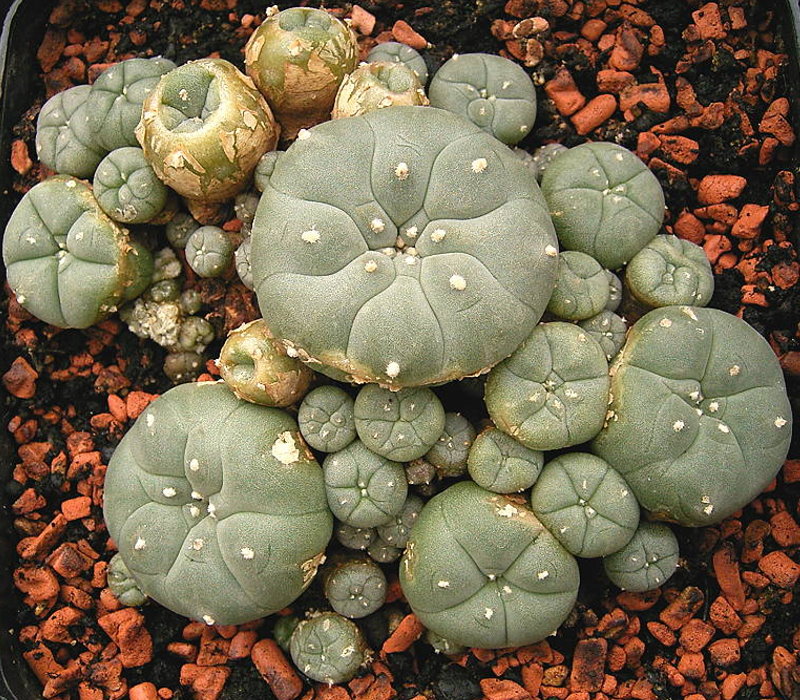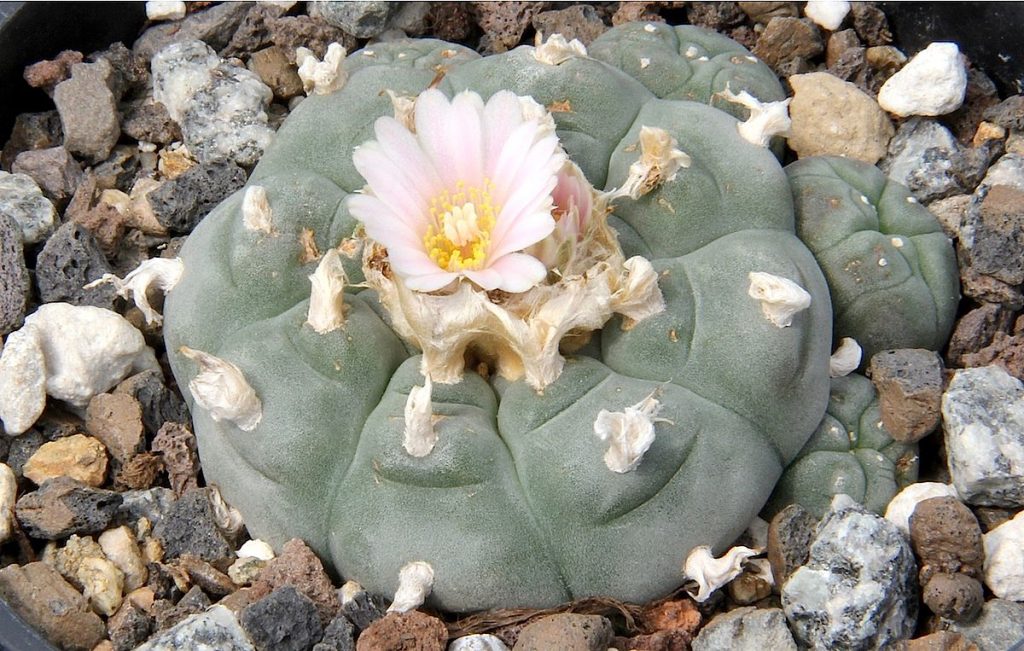
Also called mescal button, this spineless cactus is native to southern Texas and northern Mexico, and is a member of the cactus family, Cactaceae, that also includes prickly pear and cholla. The plants have a deep carrot-shaped taproot and one or more blue-green or yellow-green, short stems that may be almost 3″ tall and wide. Each stem is divided around the top into low rounded sections that bear a tuft of yellowish white hairs. In summer, saucer-shaped yellow, pink or white flowers appear in the center of the plant. They are 1/2-1″ across, have 7-20 tepals, and remain open for only 2 to 5 days, depending on heat and dryness. The pink, berry-like fruit is edible, club-shaped, and contains pear-shaped black seeds. All the above ground parts of peyote contains alkaloids including muscaline, an illegal hallucinogen. The plant can only be legally grown and used for religious purposes but wild populations have been so overharvested it is considered endangered in Texas. The genus name, Lophophora, comes from the ancient Greek words λόφος (lóphos) meaning the crest of a hill and φέρω (phérō) meaning to bear, and refers to the tufts of hair on the plant’s surface. The specific epithet, williamsii, honors Sir C. H. Williams, the British ambassador to the state of Bahia, Mexico. Photo Credit Frank Vincentz Wikimedia Commons

Type: Succulent perennial
Bloom: Saucer-shaped white, yellow or pink flowers in summer
Size: 3″ H x 3″ W
Light: Partial shade
Soil: Gravelly, dry, well drained
Hardiness: Zones 10-11 (unverified)
Care: Low maintenance; beware of over watering
Pests and Diseases: Spider mites, mealy bugs
Propagation: Seed, division
Companion Plants: Not relevant because plant is illegal in US
Outstanding Selections: None available
Photo Credit: Peter A. Mansfeld Wikimedia Commons